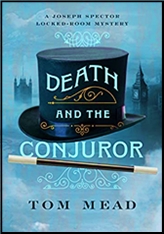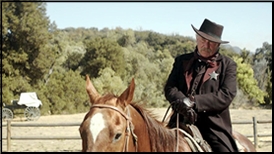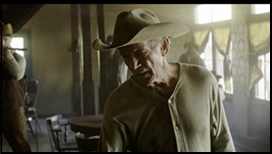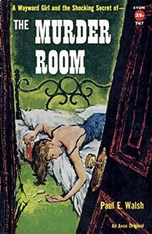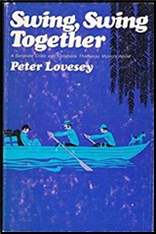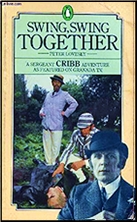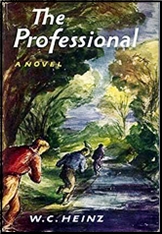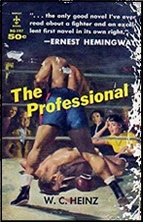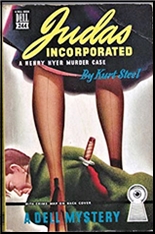REVIEWED BY DAVID VINEYARD:
HENRY WILSON ALLEN – Genesis Five. William Morrow, hardcover, 1968. Pyramid T-2162, paperback, 1970.
Somewhere in the deepest frost-bound hell of the Polar Icecap there sleeps beneath the eternally frozen Sea of Tursk an island once called Okatrai.
When I realized who Henry Wilson Allen was (and I’ll reveal that as this review progresses for anyone as ignorant as I was) I knew I had to read this 1968 near future Science Fiction/Horror Thriller somewhat in the Michael Crichton tradition, but with far deeper pulp roots.

I’ll say this, for all its flaws as scientific speculation or true SF, it is delightful barn=burner of a novel full of enough sturm n drang for a dozen longer books, and oddly looks forward to the kind of not quite SF speculative thrillers that often top today’s bestseller lists from James Rollins, Clive Cussler, and Andy McDermott.
It is well written, playful, and if closer to SF movies or the kind of “Monster†thriller from television thrillers by Nigel Kneale or episodes of Doctor Who, and Outer Limits, it is still for all that great fun. The “monster†here is a good one.
It is not Helnlein or Asimov and John Campbell wouldn’t recognize it, but it is a slam bang thriller.
As we are told the book is taken from The Suntar Papers found at the crash site of a Russian ship and recounts in the words of the papers author, Yuri Suntar, the events surrounding the The Siberian Center for Genetic Studies, known by its code name Genesis Five.
Whether this controversial journal is authentic or the bizarre creation of some deranged hoaxer must remain the subject of another time.
That rather Victorian disclaimer aside we plunge right in, and there is hardly time to catch a breath beyond that point.
Yuri Suntar, our narrator, is the half Mongol son of an American spy and a Soviet citizen, a blonde blue eyed Mongol distrusted all his life and always in the shadow of his brother Yang, Olympic athlete, physical giant, and perfect specimen of Mongol manhood. As the novel opens the security services have shown up at Yuri’s doorstep and he is none too sure whether he is under arrest or being offered a job.
“You are the state police,†I asked.
“Let us say that is not the question.â€
Whisked off across country Yuri is soon introduced to the exotic and beautiful Chandra Maringa, the lilac-eyed daughter of a Chinese woman and a Masai scientist, and the granddaughter of the Soviet Union’s most famous scientist the pure Mandarin genius Dr. Ho Wu Chen.
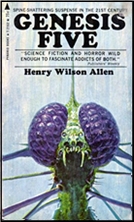
Entranced by Chandra (who has little use for him), frightened and impressed by Dr. Ho, and by no means certain of himself Yuri discovers that the doctor runs a vast underground scientific research station beneath Okatrai Island in the Arctic wastes where Yang, his brother, has been given the job of master of the savage wolves used for experiment at the facility. Yang asked for Yuri, and Yang gets what he wants.
Arriving at the bizarre underground base Yuri soon encounters Yang and his wolves, and they are not the three little pig kind. What they are is what some Cockney in every British horror movie ever made inevitably calls “an ’orror, Guv’nor, It were an ’orror!â€
A hybrid of man and wolf with insect larva that allows Dr. Ho to bind them together they are strong, fast, smart, and murderous of fang claw and fatal stinger.
The Chinese biochemist eyed me unblinkingly.
“…What we shall create here is the flawless shell of the human species programmed genetically for pack law behaviorism.â€
“Programmed for what, Doctor?â€
“To kill without conscience, hence without memory.â€
“Men with the morals of a wolf superimposed with the work habits of the honeybee, it would have brought forth the work-troops of the new world…†He further informs Yuri.
In short, “It were an ’orror!â€
Yuri wants out of the madhouse naturally. And to that end he discovers Ho has secrets of his own including having stored Chandra’s father in hyper-sleep and telling her he is dead. With Joseph Maringa’s help, and few allies, and Chandra won over to his cause Yuri sets out to let the world know what Dr. Ho plans, but things don’t go smoothly…
And thereby hangs a tale, as they used to say.
Behind us Okatrai went up in a sucking spume of atomized rock, water, ice, of all living and nonliving that had been the vanished Island of Genesis Five.
Shades of Jules Verne.
You will have noted by now it is a “Yellow Peril†novel in many ways, with Dr. Ho in the Fu Manchu mold, but canny enough to do so with mixed race hero and heroine and a cast of good and bad Chinese and Russians. The author also shows he did his research in his study of Mongol culture and Yuri is both believable and admirable, but then the author has a pretty good history of writing sympathetically about races other than his own with insight and significant research.
I’ll tease a bit first, because readers of this blog know who Henry Wilson Allen is on multiple levels. First you know him because for ten years he worked at MGM animation studios as a gag man under the name of Hec Allen, and wrote almost all of the classic Tex Avery cartoons between 1944 and 1954 that have become the stuff of animation legend. He’s that Henry Wilson Allen.
Still, that would not explain his gift for research and writing about other races. He earned those spurs literally writing under two other better known names as my favorite Western writer of all time, Will Henry and Clay Fisher.
You know, McKenna’s Gold, Who Rides With Wyatt, Yellowstone Kelly, Pillars of the Sky, The Tall Men, Santa Fe Passage, I Tom Horn, From Where the Sun Now Stands, No Survivors, North Star, those Westerns, many of which were also movies.
I won’t pretend Genesis Five is politically correct in any way, but it is entertaining and well written, and for its time closer to Richard Condon teasing old pulp traditions (the villains in Whisper of the Axe are the PRC sponsoring terrorism and the villain and hero both ethnic minorities) than the last legs of the Sax Rohmer style Yellow Peril threat to the Western White world plots of old.
In 1968 Nixon had yet to go to China, and China was on the way to replacing the Soviets as the favorite villain of thriller fiction. Its no excuse, but you can see Allen trying to have it both ways, and almost getting away with it by making Yuri and Chandra attractive near superhuman heroes struggling against not just Ho’s madness, but a society and government who would employ him.
Read in context he succeeded, though not so much from a more modern view.
Knowing that, accepting its limitations, it makes for an interesting side light on the better known careers of Hec Allen, Will Henry, and Clay Fisher. There are stylistic touches, and moments when he gets in Yuri’s head that will remind you of some of his Western novels, and whatever else it is a rip roaring thriller.
…this was the moment beyond which that stillness lit by strange lights and tolled by mute sounds of darkness, and for the space of time unknown.

